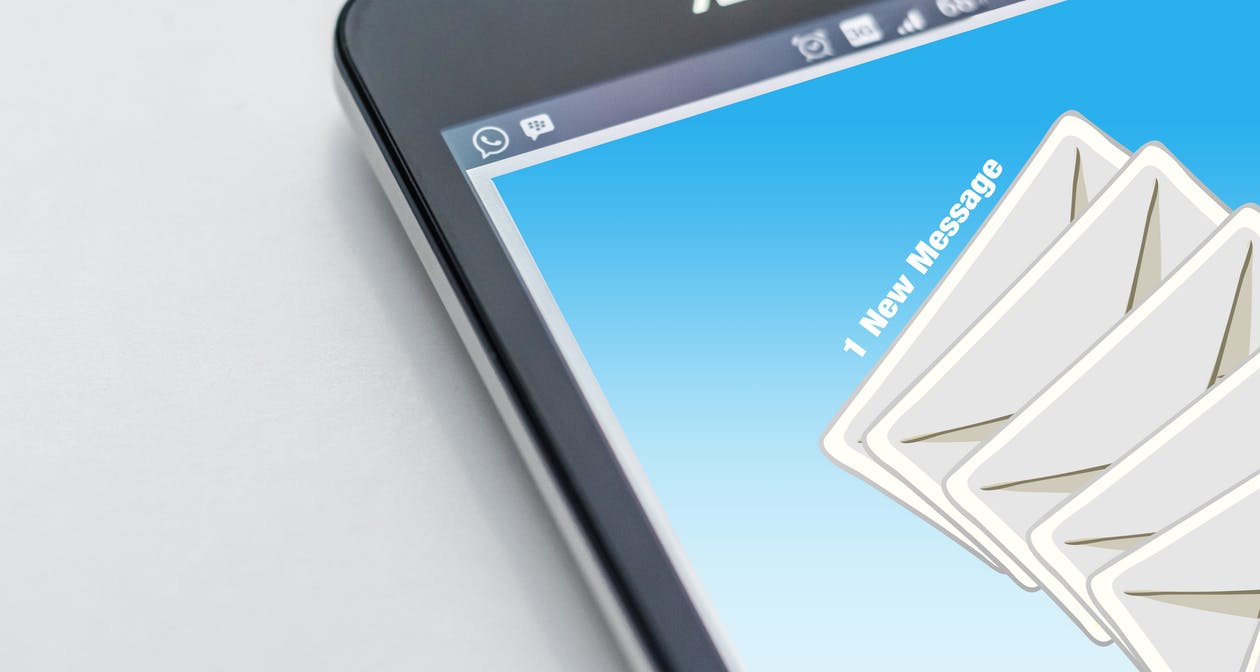There might be nothing worse than a terrible email subject line. Your inbox gets slammed with all types of emails, from spam emails to business emails to personal emails. But the one thing they all have in common is the subject of their email is the first thing you see. First impressions are important, especially when it comes to emails. If your subject line is full or errors or lacks creativity, you could face your email getting straight deleted, without even being opened. It doesn’t really matter what type of email you are sending, the subject line sets the tone for your email. To prevent your email from going into the trash before it is even open, make sure your subject line is clear and to the point. You also never want to use a subject line that has nothing to do with your email! Think of your subject line like a headline, it needs to represent what is in your email and not misguide your readers! The experts at My Emma came together to make a list of the 11 email subject lines that you should always avoid to help you know the rights from wrongs of subject lines, so make sure to take notes!
When it comes to email marketing, subject lines are the make-it-or-break-it. Many times, the subject line is your prospect’s first interaction with your brand or new marketing campaign. It should promise value, convey your brand’s personality, and get them to open and read your email.
And yet, so many businesses pay little attention to this factor necessary for customer engagement, and that’s a big mistake we don’t want you to make.
Not thinking through your subject line can not only curtail results, but the wrong line can also ding your sender reputation and send your emails to the spam folder.
11 email subject line mistakes to learn from
Good email marketing begins with the subject line, and good subject lines are easy to create if you know what your customers are interested in.
We’ve curated a list of subject line mistakes to stay away from for better open rates and happier customers.
1. Writing a generic subject line
Your customers crave authenticity, which means they don’t respond well to those blanket, one-size-fits-all emails that many marketers send.
If you’re thinking ahead when your customers opt-in to your emails, tons of data can be at your fingertips that can be used to define your target audience — age, gender, geographic location, hobbies, profession—and, of course, their name.
Use all of this powerful stuff to craft subject lines that resonate with your audience and engage their curiosity to prompt more opens and click-throughs.
Sending generic, off-the-shelf subject lines will relegate your emails to the junk bin or spam folder.
2. Forgetting preheader text
So many marketers don’t even know what this is, and yet the preview, or preheader, text in your email can make or break your open rates.
Preview text appears in your customers’ inboxes right after your subject line, like so:
Generally, this is pulled from your first sentence when you’re sending personal emails, but in the marketing world, it normally consists of image alt text or browser instructions, like the one below:
Most email service providers (ESPs) give marketers a box in which to choose what text gets shown in the preview. Using 35-90 characters to capture the recipient’s interest—and supplement your subject line—will help you get those high open rates.
3. Not leveraging urgency in the subject line
Subject lines that convey a sense of urgency have a 22% higher open rate than those that don’t. Leverage this power by creating a subject line that communicates urgency or scarcity:
Image: JeffBullas.com
Williams-Sonoma tackles this nicely with a subject line that reads, “Final Hours to Save on Soaps, Lotions, and More.”
They’ve given recipients a reason to click immediately without using spammy or misleading phrasing.
4. Not optimizing for mobile
With about 81% of people regularly using their smartphone to check emails, it’s critical that your emails, including subject lines, are optimized for mobile users.
Make sure your subject line doesn’t translate into random characters, numbers, or code when opened on a mobile device by previewing your email across all channels before sending.
Unrecognizable text or shapes in the subject line will spell disaster for your email.
5. Shouting in the subject line
It’s good to be excited about your product or service, but you don’t have to yell at your customers to get their attention.
If you’re using ALL CAPS in your subject line, that’s what you’re doing, and it could be misinterpreted as rude. You want your prospect’s first contact with your brand to be a good experience.
Not only does using caps in your subject line come across as shouting, but this kind of type also often triggers spam filters, too.
6. Using special characters
Special characters in a subject line can result in your email landing in the not-so-special spam folder, even if some marketers report success with them.
There is enough evidence that these characters can just as easily get your email deleted or relegated to spam for it to be worth taking the chance.
Characters like $, #, @, &, and others should be reserved for the body of your email if you feel you must use them. And, if you have to include them, use them sparingly for best results.
7. Filling your subject line with spammy words
Your subject line is the gatekeeper for people opening your email. If your email is thrown into the spam folder, it will never get seen by your target audience and it will damage your reputation as a sender.
Having a bad sender reputation contributes to email deliverability issues and low search engine rankings.To avoid this, keep spammy words and phrases out of your subject lines.
Here is a short list of examples of words and phrases to avoid:
- Do you like/have/want?
- Act now
- Order now
- All natural
- Affordable
- Amazing stuff
- Cash Bonus
- Compare rates
- Credit
- Guarantee
- Home-based
- Increase sales
- Info you requested
- Incredible deal
- Limited-time offer
- No investment
- Obligation
- Almost any phrase with the word “free” in it
- Cheap
- Promise
- Thousands
There are hundreds more, but these will give you a good idea as to what kinds of language triggers spam filters.
With so many techniques for writing good subject lines, it’s easy to leave these words out of the mix for better open rates and a clean reputation for your brand.
8. Run-on subject lines
Business people get upwards of 122 emails a day, so they don’t have time to read a novel when skimming their inbox.
Short is sweet when it comes to subject lines, but it also drives results:
Image: Business2Community.com
As you can see, the best open rates fall in the 6-10 word range, with rates dropping the longer the subject lines ran.
So, save the meat of your information for the body of your email and use your subject line to pique interest, convey urgency, or deploy one of the other open-rate boosting tactics out there.
9. One-word subject lines
Keeping your subject line short is a good idea, but relegating it to one word is taking efficiency a bit too far.
Most people aren’t going to respond to a subject line that just says, “Important.”
Couldn’t anything be considered important?
They’ll be unlikely to open one that says, “Survey” since you haven’t given them a reason to bother with a survey, and “Hi” will get you sent straight to the junk folder or reported.
One-word subject lines appear lazy, unprofessional, and spammy. Besides, using a few more words gives you the ability to be more creative and strike a chord with the recipient and their needs.
10. Overusing emojis
Emojis can increase email open rates, but they have limited applications you should be aware of before employing them.
If your product or service is more conservative, a smiley-face may not be the right vehicle to match your brand image.
Also consider that emojis are rendered differently across platforms, so they may come across as strange characters for some viewers.
That being said, they do work in some applications, so use your best judgment and data on your audience to decide if they’re right for your brand.
11. Misleading subject lines
Customers have email overload to begin with, and getting them to open your email using a deceptive subject line will only get you deleted or reported as spam, and leave your prospect cold.
Your subject lines should clearly outline what the customer can expect from your email. Using “RE:” as a subject when you haven’t had prior contact with them is a red flag, as is using fear-based tactics, like “your account status,” or “you missed it.”
Wrap up
Subject lines are your brand’s first contact with potential customers and, if used correctly, they can contribute to a thriving, profitable email marketing campaign.
Avoid making subject line mistakes like the ones in this article by familiarizing yourself with common errors and having several proofreaders look over your marketing emails before you press send.








Show Comments (0)